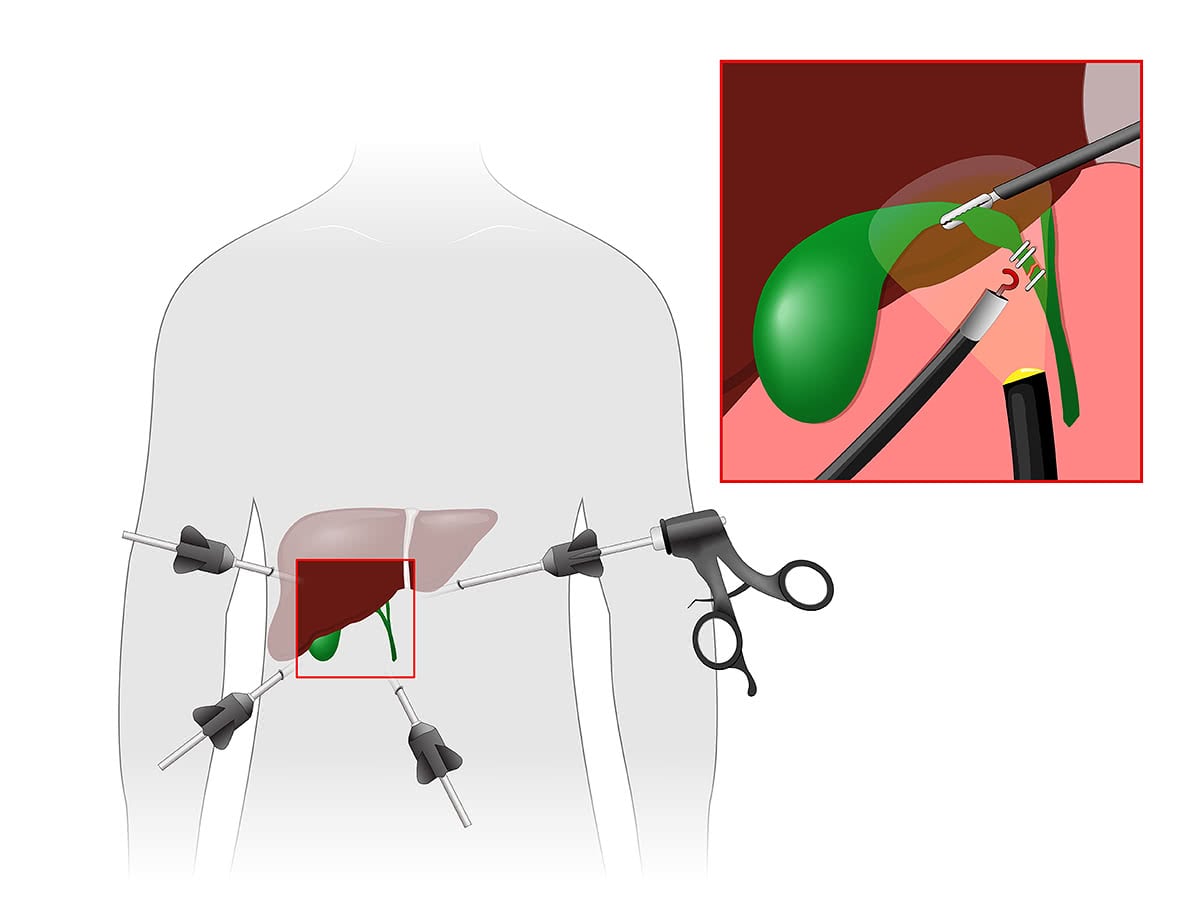Introduction
Gallbladder surgery is one of the common operations. Nowadays, most of gallbladder removals is achieved by a keyhole approach. However, due to certain indications the surgeons are still doing the old-fashion open technique. In both ways it is a safe operation and the patient recovers from it relatively quickly.
Indications
The gallbladder is removed when it has stones, polyps or mass lesions. The removal of the gallbladder can either be achieved on elective or emergency basis. Removing gallbladder due to stones does not necessarily need the patient to be symptomatic for it. Also, the gallbladder might be removed as part of an abdominal operation for example doing liver resection.
Preoperative Instructions
- Adequate pre-operative assessment includes: performing an ultrasound of the upper abdomen, full blood test, liver function test and pancreatic enzymes assessments.
- General assessment of fitness for surgery is usually undertaken by the anaesthetist.
- A special consideration is to be given for patent on blood thinner tablets like Warfarin and Plavix which they need to be with health for a few days prior to the operation.
- If there is a stone in the main bile duct, a special endoscopy called ERCP is needed to clear the bile duct before the gallbladder operation.
Procedure
Laparoscopic Cholecystectomy (Keyhole removal of the gallbladder)
This is a common surgery that requires general anaesthesia. The surgeons will usually make 4 incisions in your abdomen. They’ll then insert a small, lighted device into one of the incisions and carefully remove your gallbladder. During the operation, the surgeon will perform a special X-ray to make sure that the common bile duct has no stones. You usually go home on the day of the procedure or the day after if you have no complications.
If a stone in the common bile duct is diagnosed, the patient will then need an endoscopy to remove the stone after the gallbladder operation.
Open Cholecystectomy
Your surgeon removes the gallbladder through the large, open incision. It is less commonly performed nowadays as the procedure can mostly be successfully removed laparoscopically. This approach is indicated if the patient has multiple abdominal surgical operations, big cancer of the gallbladder, lung failure or any other contraindication to laparoscopic surgery.
Postoperative Instructions
Following laparoscopic surgery, you can go home on the same day or the next day after recovering from the effects of the anaesthesia. You can return to normal activities within 24 hours and resume work in a week. However, you should not engage in strenuous activities for two weeks.
Risks
The removal of the gallbladder is generally a safe procedure; however, the uncommon risks and complications may include: bleeding, infection, injury to the bile duct, leakage of bile fluid and damage to the bowel and other organs.





